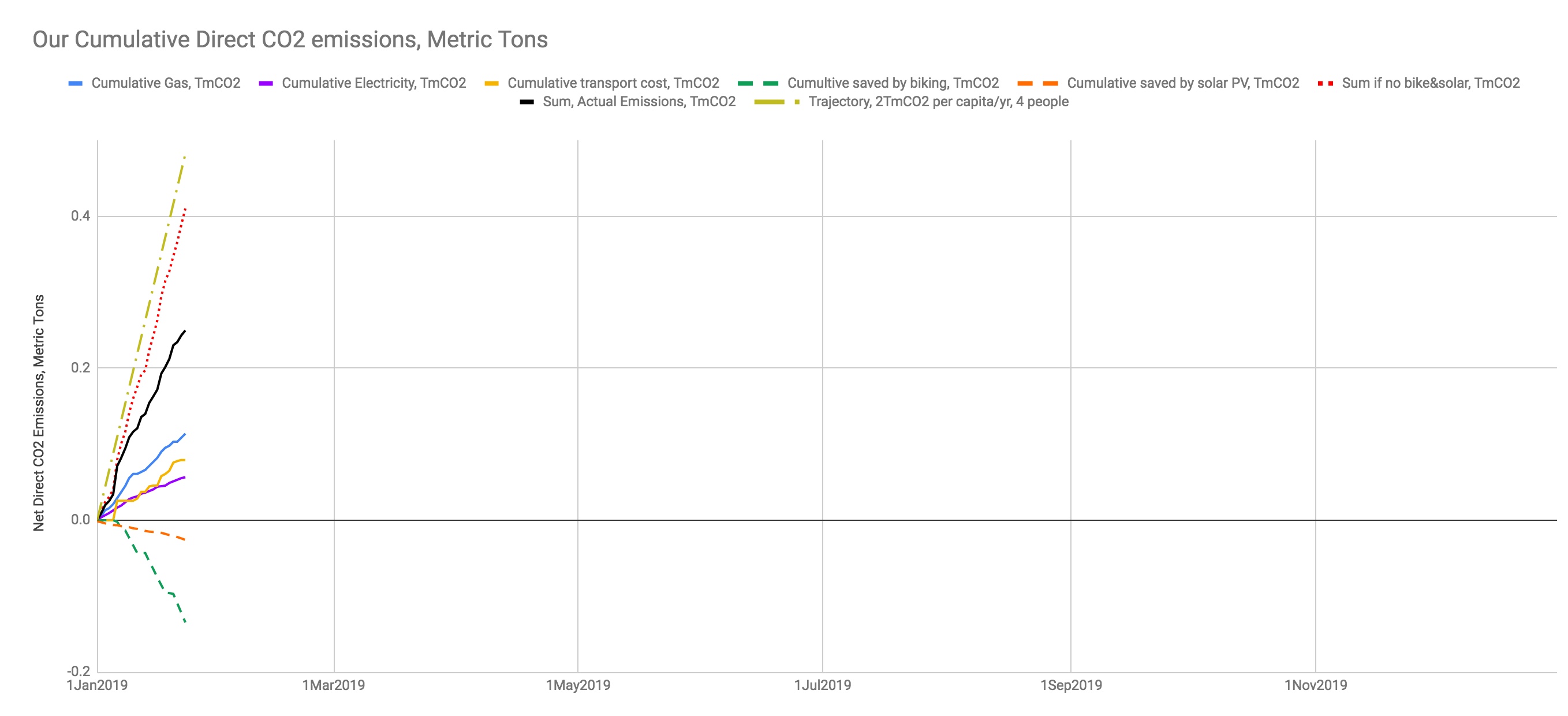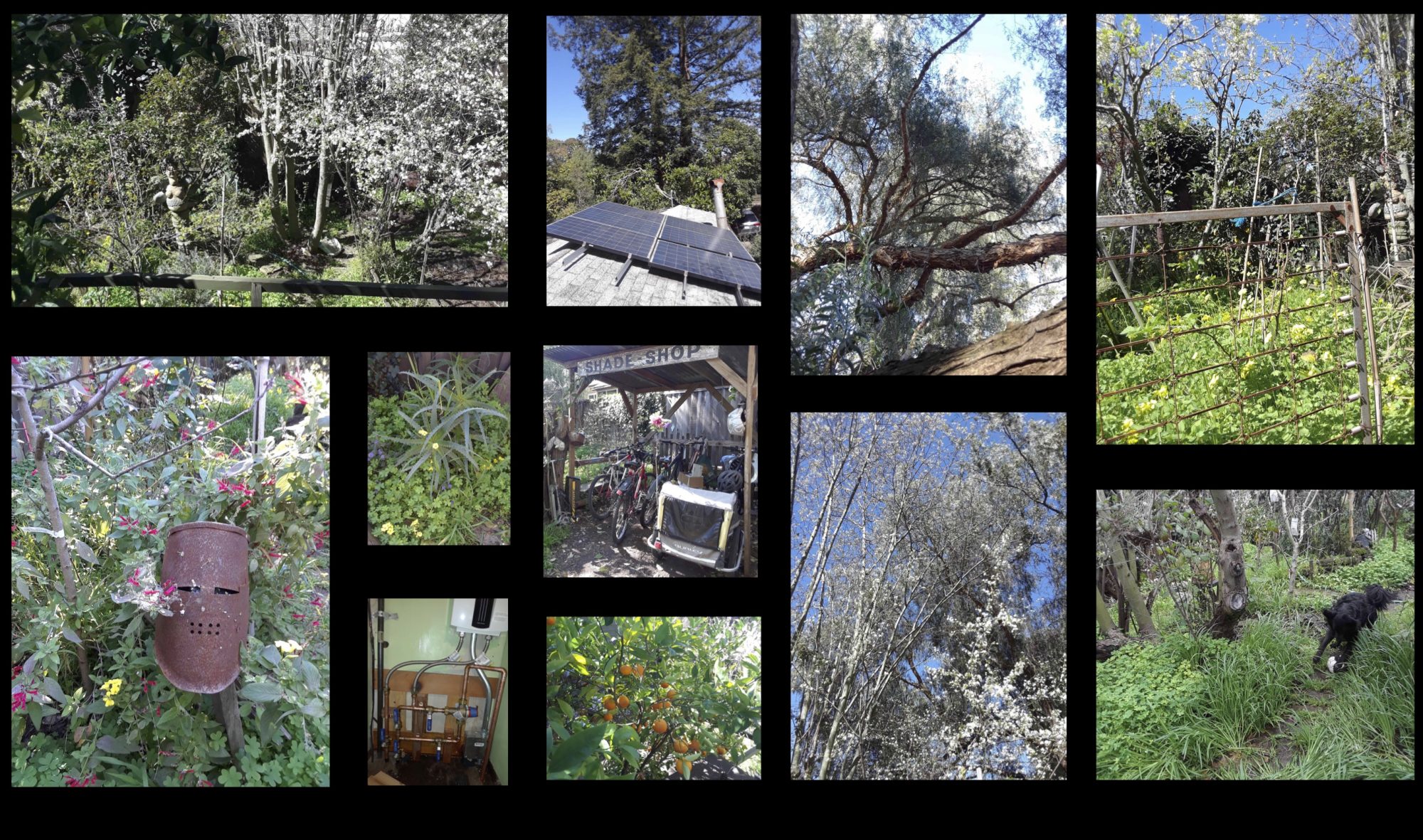Our family is acting, voluntarily and aggressively reducing our ecological footprint. Voluntary Footprint Reduction. The sluggishness of governments/regulations/companies/economies to make changes to reduce the human impact on the planet is likely to be far too slow. However, there must be 50 million households in the US, and all of these households and the hundreds of millions of individuals within could probably reduce their footprint 10 or 20% immediately by changing habits, adjusting lifestyles, and sacrificing and stretching a bit. The collective power of the people to make immediate changes is truly immense. If you are reading this, please voluntarily reduce your ecological footprint as quickly and aggressively as possible. And encourage others to do the same. The planet and all living things will thank you in beneficial and rewarding ways you can’t possibly imagine.
Solar Water Heat…coming soon?
We are progressing toward what we have put-off for far too long: eliminating natural gas fired, storage-based water heating and replacing it with solar thermal with electric on-demand back-up. Evacuated tube collector tubes, manifolds and mounting frame hardware have been sitting around for years since we purchased these from a departing neighbor. As part of this conversion of our very modest home infrastructure, we will eliminate the 30gallon tank which fills our kitchen closet (the only built-in closet in our house!) and will regain this space for use as a pantry and for storage of many things which currently cause our kitchen to be cluttered and hard to use. This will be a very welcome benefit of reducing our consumption of natural gas.
Today I spent more time developing a spreadsheet to calculate elements of system performance and to help size components. There is a lot of work to do here but I’m excited to make progress and pull the kids into the process. Next weekend….starting installation? Phase one will be 1/3 of the system for domestic water heat. Phase 2 will be 3 collectors to drive some radiators for a bit of house heat and, if all goes well, perhaps to heat a small hot tub as well. Wouldn’t that be nice.
Cool Blocks
Today we were trained as CoolBlocks leaders and will, over the next 4 months or so, lead a small team of neighbors through the program. The resulting actions we choose to undertake will benefit the people in our neighborhood by building a sense of community, by improving our preparedness for disasters, and by reducing our ecological footprint. The program seems well-conceived and structured. We and the other neighbors who participate in the team will complete tangible, meaningful actions which improve the quality of our lives and reduce the sense of isolation around us, all while significantly reducing our impact on the planet.
CO2 emissions tracking chart – live
Our energy and transportation tracking spreadsheets now calculate equivalent CO2 emissions (metric tons). These numbers feed a chart. This chart can be seen on the home page (postage stamp size – working on changing this) if you scroll down to the “What we are doing and why” section. This chart is updating almost daily.

This chart shows our actual energy consumption from electricity and transportation and includes a sum total actual CO2 emission. There are also negative lines for our bike commuting and our solar PV generation. The chart has a dotted red line which shows what our emissions would be if we were not generating some electricity and were not displacing car trips by biking. For reference, I’ve added a target line which is 2.0TmCO2 per capita per year, turned into a daily emission allowance.
The next project is to add out food consumption CO2 footprint to this chart.
Signing up at the neighborhood level
We are jumping in to help the CoolBlocks roll-out in Palo Alto and hope, as volunteer block-leaders, to build some very local momentum toward footprint reduction and block-level community building. From what some of the alumni and coaches said at the introductory meeting, the program sounds like it is well considered, thoughtfully developed, and honed to incite valuable actions at the neighborhood level. We’ll learn more in the training, and even more as we build our neighborhood team and undertake actions aiming to reduce footprint, improve disaster readiness, and build community connections in the surprisingly isolating Palo Alto.
starting in – slowly
While figuring out how to make a webpage is going slowly, we are sprinting forward exploring additional ways to significantly reduce our footprint. Since we’ve always been very focused on stepping softly on the planet, 2019 will push us into some significant changes to cut our impact in half again from 2018 levels. Stay tuned for details on some of the plans.
Hm…how does this thing work?
posts coming soon…..
